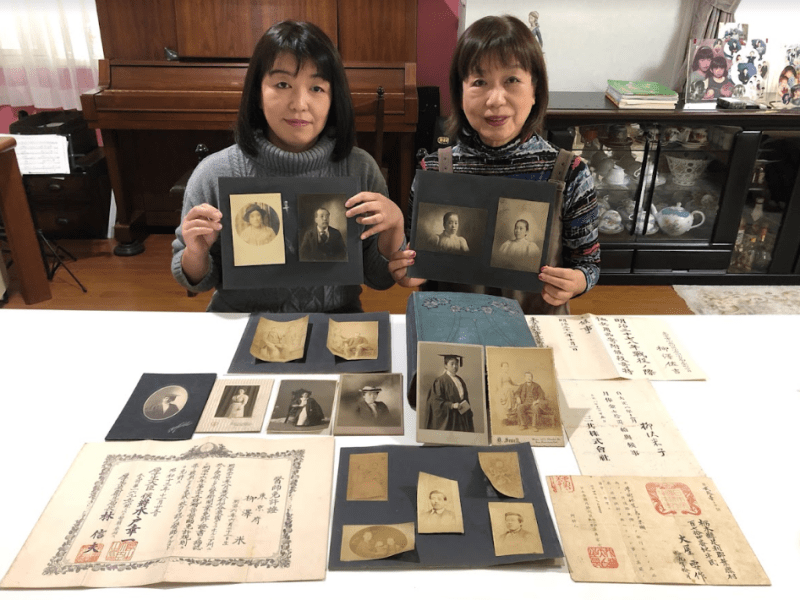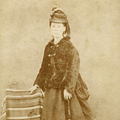“Come to think of it, it is quite a magnificent gravestone…”
Kanako Yamaguchi, a resident of Tokyo, wondered about the size of her ancestor’s gravestone when she attended her grandmother’s funeral in 2004. She went home and searched the Internet for the name carved on the tombstone, “Sakichi Yanagisawa.”
Eventually, details slowly emerged of a family ancestor and a pioneer of early Japanese immigration to the U.S.
Sakichi Yanagisawa was one of the settlers at the Wakamatsu Colony, the first Japanese settlement on the American mainland.
More than 150 years since the colony’s founding, photos of Yanagisawa and historical documents related to his journey to America were discovered at the Tokyo home of his descendant. This is the first time these discoveries have been revealed.
In order to preserve the stories of the earliest Japanese pioneers, The Rafu Shimpo would like to share the stories of Yanagisawa and his family, along with the newly discovered photos and historical documents, as well as the descendants’ thoughts on their ancestors.

* * * * *
The Wakamatsu Colony
In 1869, the first Japanese settlers, led by Henry Schnell, a Prussian arms dealer and military adviser of Katamori Matsudaira, feudal lord of the Aizu Domain, arrived on the American mainland and established the first Japanese colony, called Wakamatsu Silk and Tea Farm, in Gold Hill, El Dorado County, Northern California.
The settlers included former samurai from the Aizu clan, which had lost the Bosin Civil War, as well as people from other regions.
They tried to cultivate tea and mulberry, but the crops died because of drought and pollutants from nearby gold mines. Due to the financial difficulties, the colony collapsed in just two years.
The colonists dispersed, some deciding to stay in California, while others chose to return to Japan.
“A History of Yokohama City,” compiled by the city of Yokohama, records that Schnell took about 20 Japanese to Gold Hill for farming, but the conditions were so severe that three of them escaped. They relied on a man named Sato of the Matsu Company, and although they had no money, they had a stamp (probably it means a passport), so they had no trouble finding food along the way.
In 2019, a ceremony was held to commemorate the 150th anniversary of the settlement at the site of Wakamatsu Colony.
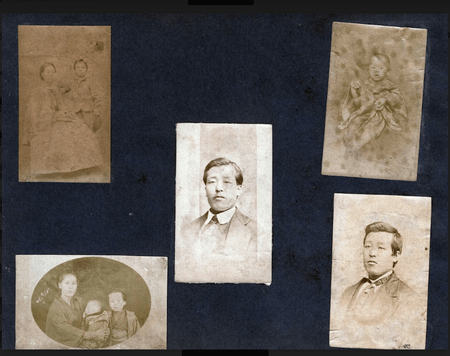
Discovery of Family Photos
Old photographs of Japanese settlers are prominently displayed at the site of the Wakamatsu Colony. These were taken at a photo studio in the nearby town of Placerville.
Among them, there is a photo of woman wearing a dress and sitting on a chair. When I visited the site for my research, upon seeing the photo, my thoughts went to the woman who once lived there and built the colony about 150 years ago.
Who is this woman? Where did she go after the colony collapsed, and what kind of life did she live? Her identity was shrouded in mystery and lost in the darkness of history.
However, in October 2021, the same photo of this woman was found in a home in Tokyo, about 5,200 miles away from Gold Hill.
The persons who are in possession of the photo are Kanako Yamaguchi, a descendant of Sakichi Yanagisawa, and her mother, Ayako Matsufuji (maiden name: Yanagisawa).
Kanako is Sakichi’s great-great-granddaughter, and Ayako is his great-granddaughter.
When I visited Ayako’s home, where the photos had been found, the newly discovered photo album was covered with dust and the seams on the spine were fraying, a reminder of how long it had been since the images were taken.
However, the people in the photo album were still alive and vivid, as if they had been waiting for this moment of rediscovery.
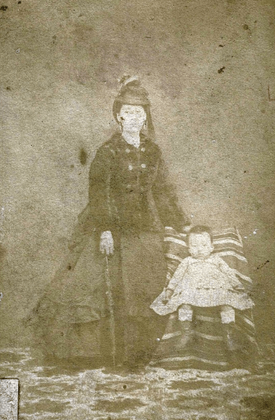
The photo album had images of Sakichi, his wife Nami and their daughter Yone.
What caught my attention the most was that there was a photo on the first page of the album that was the same as the photo of the woman displayed at the site of the Wakamatsu Colony.
It is on the family page along with a photo of Sakichi in his younger days.
“We think this woman is Nami,” Ayako and Kanako confirmed.
Acoording to Naomi Izakura of the Japan Camera Museum, an expert specializing in old photographs from the late Edo, Meiji and Taisho periods, “The man, woman and children in this page could very well be father, mother and their child.”
Nami appears in several photos in different outfits and with a young girl.
“All the women are the same person, and the girl is also believed to be the same child,” Izakura shared.
Based on Izakura’s analysis, it is possible that this girl is Yone.
In addition to the old photographs, they also found a number of important documents, including the official government-issued family registry (koseki), passport, university graduation cap, medical license and so on.
Among the documents discovered this time were postcards sent by Yone’s American friends from all over the world, clippings from English-language newspapers that she subscribed to in Japan, letters of appreciation for donations, and a Japanese practice book, as if she was not proficient in Japanese since she grew up in the U.S.
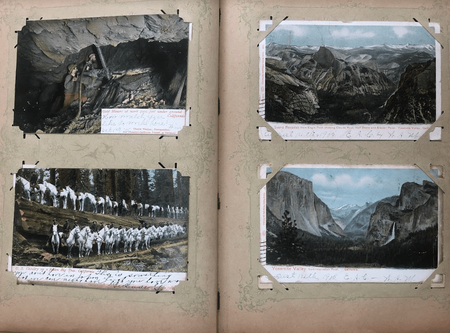
“My mother told me that many of visitors at that time were Americans. When I was little, my playthings were also American toys and American doctor’s tools,” Ayako recalled.
Ayako had been looking at photos of Yone since she was in elementary school, but she had lost track of them after her father passed away.
But when Ayako was cleaning out her parents’ house, she found an album of Sakichi’s family and Yone’s belongings.
The photos of Sakichi and his family, once thought to have been lost to history, were revealed once again.
*This article was originally published in the Rafu Shimpo on January 6, 2022.
© 2022 Junko Yoshida / Rafu Shimpo


